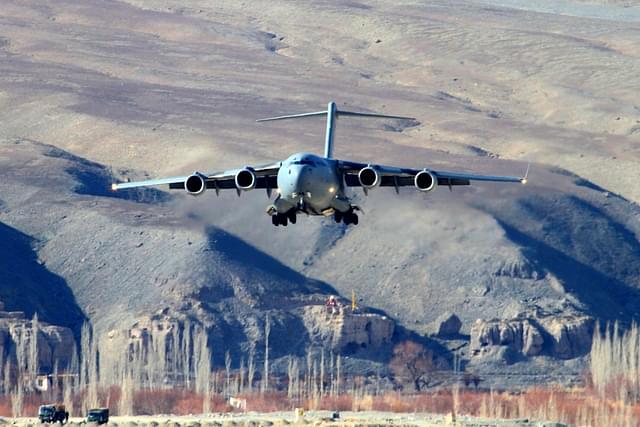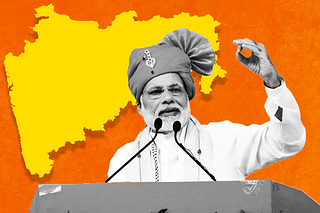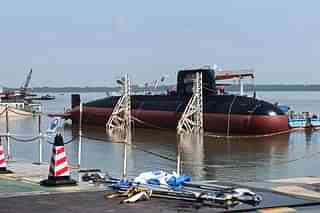Defence
Indian Air Force Is Slowly But Surely Upgrading Its Air Bases To Meet The China Challenge
Ujjwal Shrotryia
Apr 16, 2024, 06:01 PM | Updated 06:05 PM IST
Save & read from anywhere!
Bookmark stories for easy access on any device or the Swarajya app.

The Indian Air Force (IAF) is gradually getting equipped to meet the challenge posed by China. It is currently upgrading multiple forward air bases to support China-centric combat operations.
According to a report by The Print, the IAF is enhancing the infrastructure at 20 of its airbases that are focused on China. This includes creating hardened aircraft shelters (HAS), improving taxiways, adding new radars, and expanding munition storage sites.
HAS are bomb-proof shelters designed to protect aircraft housed within from missile attacks or air raids.
The upgrades are being carried out under the Modernisation of Air Field Infrastructure (MAFI) program. MAFI is a two-phase airfield upgrade program under which the Ministry of Defence (MoD) will upgrade a total of 67 air bases across India.
The first phase of the project, involving 30 airfields, was initiated in 2011 at a cost of Rs 1215 crore.
The second phase, signed in May 2020, involves upgrading 37 IAF, Indian Navy, and Indian Coast Guard airfields by Tata Power Strategic Engineering Division (Tata Power SED) for Rs 1200 crore.
This includes the installation of new features like Cat-II Instrument Landing System (ILS) and Cat-II Air Field Lighting System (AFLS), connected to air traffic control (ATC), which will allow the aircraft to take off and land even in adverse weather conditions.
The pace of upgrades has significantly increased since the start of the nearly four-year-long standoff with China.
Black toppings of forward Advanced Landing Grounds (ALGs) are also being done in forward areas to allow operations of fighter jets. For example, the 13,700-foot-high Nyoma airfield in eastern Ladakh is on the verge of completion by October 2024.
In the event of a war, the Chinese are likely to use their Rocket Force to strike important command and control nodes and try to put the IAF permanently out of action.
For India, the IAF is a trump card in any future war against China, primarily because most of its airbases are at lower altitudes, very close to mean sea level, compared to the Chinese airbases that are above 12,000 ft.
Unlike the Chinese People's Liberation Army Air Force (PLAAF) fighters, which must fly with truncated payloads due to the rarified air at those high altitudes, IAF aircraft can fly with their full fuel and weapon payloads and can be over any Chinese targets in less than half an hour.
This is precisely why the swift destruction of IAF's combat potential, including its airbases, is a priority for the Chinese.
To that end, underground munition storage facilities are being constructed to keep IAF weapons stockpiles away from prying Chinese eyes and secure from strikes by the Chinese Rocket Force. New radars are also being installed to provide adequate early-warning and weapon-quality radar tracking of Chinese targets in an air raid.
Chabua Air Base is another example.
The airbase, located in the Dibrugarh district of Assam under the eastern command, has undergone various modifications since March 2020 that includes improved taxiways, construction of HAS, and munition storage facilities apart from a large apron.
Additionally, the IAF is training to operate from emergency landing fields (ELFs) constructed on expressways and highways. Even if Chinese air and missile raids disrupt IAF operations from its airbases, it will still be able to conduct operations from these ELFs.
Furthermore, the installation of an integrated perimeter security system (IPSS) is also being conducted on the 30 frontline airbases, adding to the already contracted 23 airbases in the country.
This involves a five-tier intrusion detection and monitoring system that includes an electrical smart power fence, CCTV cameras with infrared illuminators, radars, underground vibration detection systems (UVDS) with dedicated optical fiber cables, dual PTZ (pan, tilt, zoom), and thermal cameras.
Save & read from anywhere!
Bookmark stories for easy access on any device or the Swarajya app.
Editorial Associate at Swarajya. Writes on Indian Military and Defence.
Introducing ElectionsHQ + 50 Ground Reports Project
The 2024 elections might seem easy to guess, but there are some important questions that shouldn't be missed.
Do freebies still sway voters? Do people prioritise infrastructure when voting? How will Punjab vote?
The answers to these questions provide great insights into where we, as a country, are headed in the years to come.
Swarajya is starting a project with an aim to do 50 solid ground stories and a smart commentary service on WhatsApp, a one-of-a-kind. We'd love your support during this election season.
Click below to contribute.





